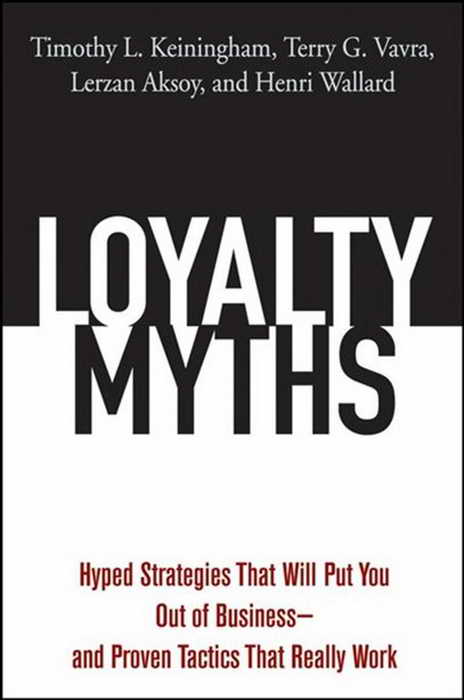Loyalty Myths: Hyped Strategies That Put You Out of Business and Proven Tactics That Really Work
RATING


Loyalty Myths begins with Pareto’s principle that 80 percent of a company’s business comes from 20 percent of its customers. At the same time, up to 60 percent of a business’s customers could actually be generating negative profits.
Companies spend billions to try to retain their customers, yet customer loyalty is in many cases eroding. This book sets out 53 myths regarding loyalty and groups them into the following categories: those that subvert company goals; those that contaminate company management practices; myths about customers, their needs, behaviors and referrals; those concerning loyalty programs; those about loyalty, share of business and profitability; and loyalty myths regarding employees. The remainder of the book goes into examples of each of the myths. At the end, the authors question what exactly loyalty really is, presenting examples of three loyalty models: the behavioral model of loyalty, the attitudinal model and the characteristics/situational model. They also address the limitations of behavioral loyalty measures and recognize the need to revise traditional measures. In the last chapter they present a loyalty process model, entailing the following steps: observation, scoring, selection, prioritization and leveraging, along with an overview of how to implement.
The final chapter contains recommendations and examples of the right way to manage for customer loyalty. Among them, the authors present Seven Truths of Customer Loyalty, which summarize the many myths into guiding principles for managing from a customer loyalty standpoint. The authors confront some key myths of customer loyalty, for example, that customer loyalty is a good predictor of profitability and customer loyalty is easily measured (there are many, varied definitions of loyalty – overall satisfaction of brand, likelihood of repurchasing, willingness to recommend), and often measurement techniques are flawed. This book forces readers to begin to think critically about customer loyalty issues in terms which are easy to read.
The book somewhat misleads in terms of providing “proven tactics that really work.” It makes a number of generalizations in presenting cases, which are low on supporting evidence or how to implement actions or solutions. The book jacket says the authors were granted unprecedented access to customer records from a wide variety of multinational corporations, able to track the impact of customer loyalty initiatives on actual purchasing, however many of the refutations to loyalty myths were highly generalized in terms of causality.
In Loyalty Myths, the authors have assembled 53 of the most common beliefs about customer loyalty – all of them wrong or misconceived! Each of the beliefs in this book is debunked with real-world examples. While other books speak in platitudes; this book is the only one to validate each proposition with real data.
Granted unprecedented access to customer records from a variety of multi-national corporations. Through these records, Ipsos Loyalty was able to precisely track the impact of this customer-centric construct on actual purchasing behavior. The authors’ findings and conclusions will stun business leaders around the world. The lessons learned from these provide a true guide for the proper use of customer loyalty.
This is useful reference material concerning the many myths of customer loyalty, regardless of the reader’s role in the business. In presenting so many myths with examples, it forces the reader to critically think about a strategy for customer loyalty. There are also useful examples of models for loyalty in the back of the book, along with a process model and recommendations for implementing.

This book is focused more on research or theory in presenting a long list of the myths of customer loyalty, with examples to refute each one. In the end of the book it presents 7 loyalty truths which organizations can use to implement better loyalty initiatives, however the book provides less in the way of a methodology or tactics for implementation. For more about implementation or measurement, see Customer Loyalty or The Ultimate Question 2.0.





 Copy Link
Copy Link
 E-mail
E-mail
 LinkedIn
LinkedIn
 Facebook
Facebook
 Telegram
Telegram
 WhatsApp
WhatsApp











 Go Back
Go Back
Leave a Reply
You must be logged in to post a comment.